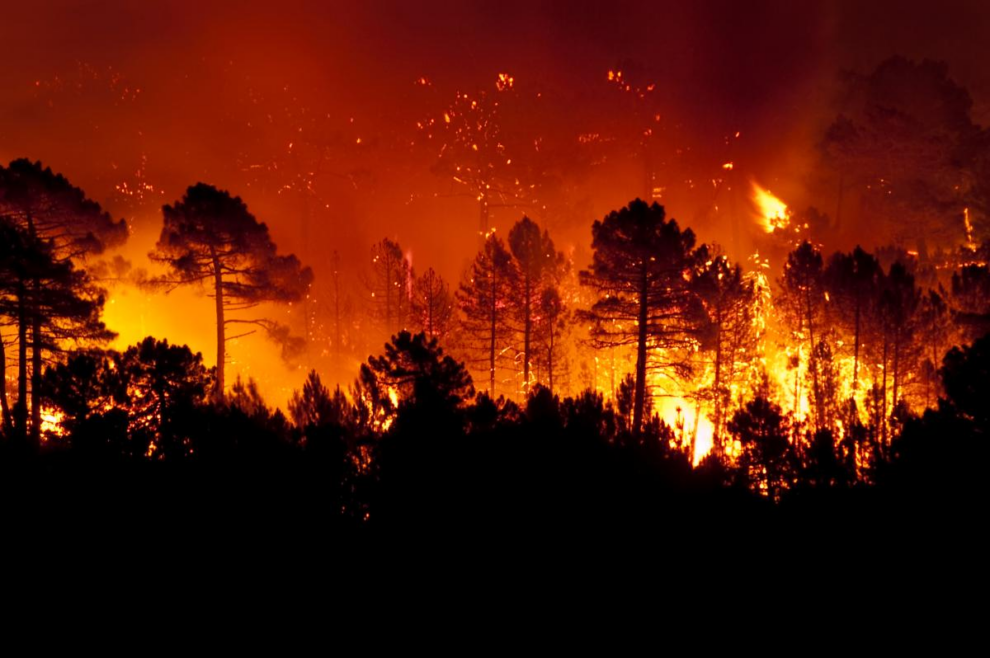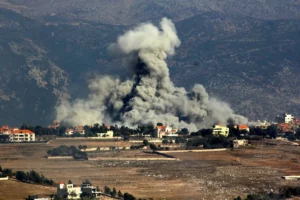With smoke still rising from forest fires across Europe, the need to find long-term solutions to one of the most destructive impacts of climate change is more urgent than ever.
At the height of the 2023 summer heatwave, more than one hundred wildfires were burning across southern Europe as temperatures once again topped 40 degrees Celsius. Thousands of tourists were evacuated, and many locals lost their homes and businesses.
Several LIFE projects across Europe are trialling innovative ways both to reduce the number of fires and their impact. In northern Italy, for example, GreenChainSAW4LIFEEN••• aims to tackle climate and environmental risks, including fires, in the Po, Bronda and Infernotto valleys.
The EUR 5.5 million project, which runs until 2024, hopes to save around 200 tonnes of CO2 a year by reducing the incidence of forest fires. The project uses a combination of climate-smart forest supply chains, which creates a low-emission energy community and an open-access digital planning platform.
Meanwhile, in Spain and Portugal – two of the worst-affected countries – LIFE LANDSCAPE FIRE aims to prevent fires by allowing goats to roam free and eat the dry grass and shrubs which fuel wildfires.
‘The goats eat grass and bushes and everything on the ground,’ says André Mota, the project’s coordinator in Portugal. ‘For us, these grasses are a problem; it’s fuel for the fires – but it’s food for the goats. In 2017, hundreds of hectares were burned in this region, but since 2018 we have halved the number of fires. It’s a winning strategy. We have to accept and work with the risk of fires.’
Preventing forest fires in the first place is, of course, the most desirable outcome. But what to do after an area of significant natural value has been devastated by wildfire? LIFE REFOREST uses cutting-edge biotechnology known as mycotechnosol to quickly recover burnt soil and vegetation and reduce soil erosion.
The EUR 1.6 million project piloted the technique at three burnt-out forest sites in north-west Spain and central Portugal, two of Europe’s worst-affected wildfire zones. Among the more significant results were 70% less soil erosion and up to 90% less downstream water pollution. As a result, soil recovery time was halved.
‘LIFE REFOREST was a great opportunity to increase our knowledge of the prevention and control of soil erosion after a fire,’ says Xosé Covelo Miguez, Technical Director of the Forestry Association of Galicia. ‘We will add this experience to our background to improve the management of the mountains.’
The GreenChainSaw4LIFE project targets the EU Adaptation Strategy and the “2020 Climate & Energy Package”, the 7th Environment Action Programme and the Common Agriculture Policy.
LIFE LANDSCAPE FIRE targets the EU Forest Strategy, the Roadmap to a Resource Efficient Europe, the EU Action Plan for Circular Economy, the Thematic Strategy for Soil Protection, the EU Biodiversity Strategy and the Habitats and Birds Directive.
LIFE REFOREST targets EU Forest Strategy, Circular Economy Action Plan, EU Soil Strategy and the EU Bioeconomy Strategy.
Source : EUROPEAN COMMISION

















Add Comment